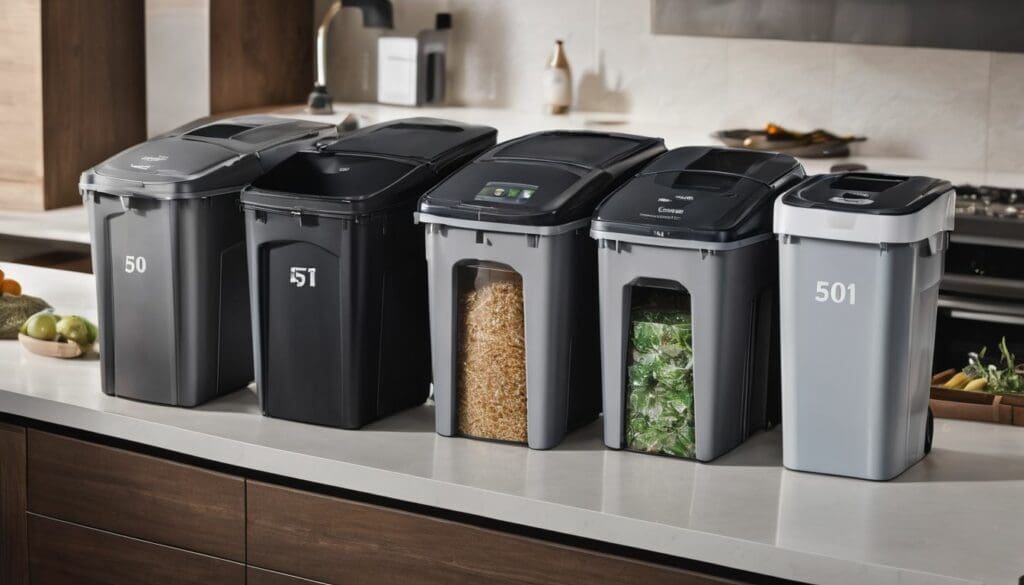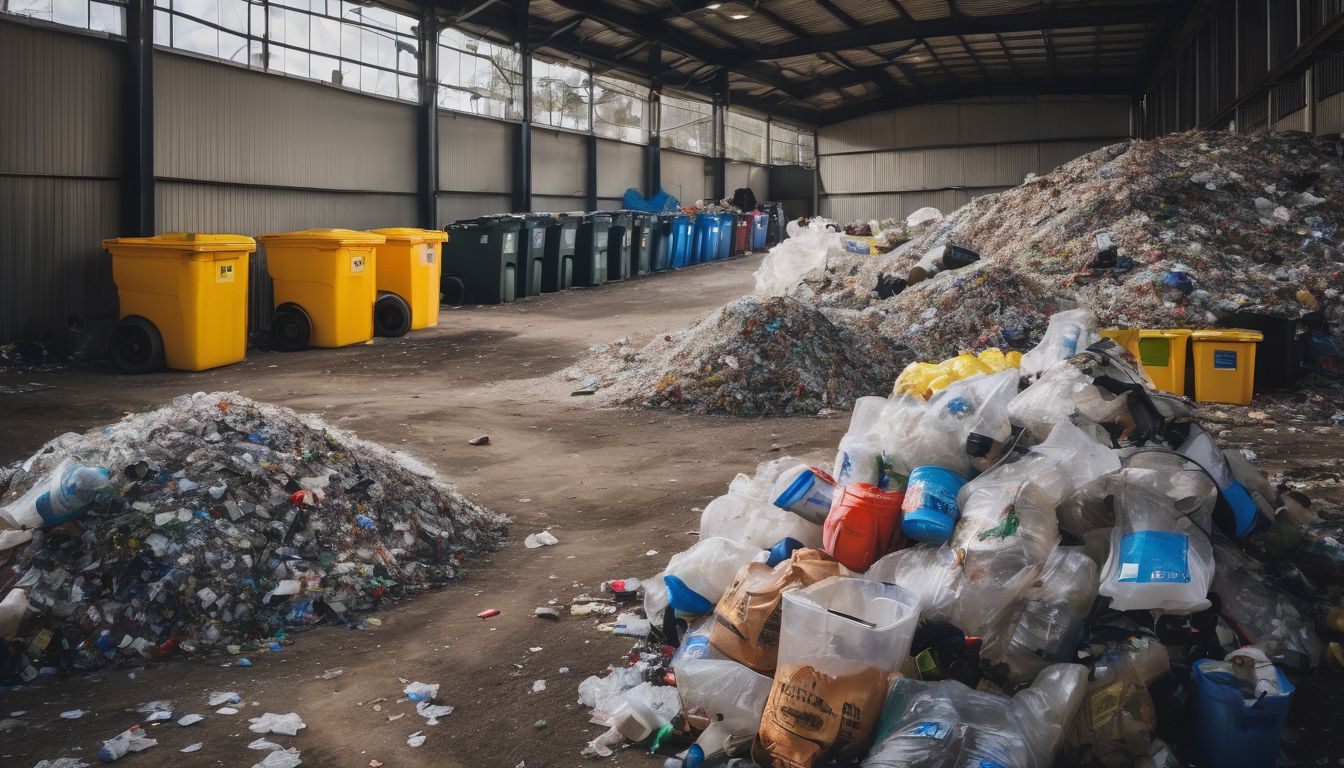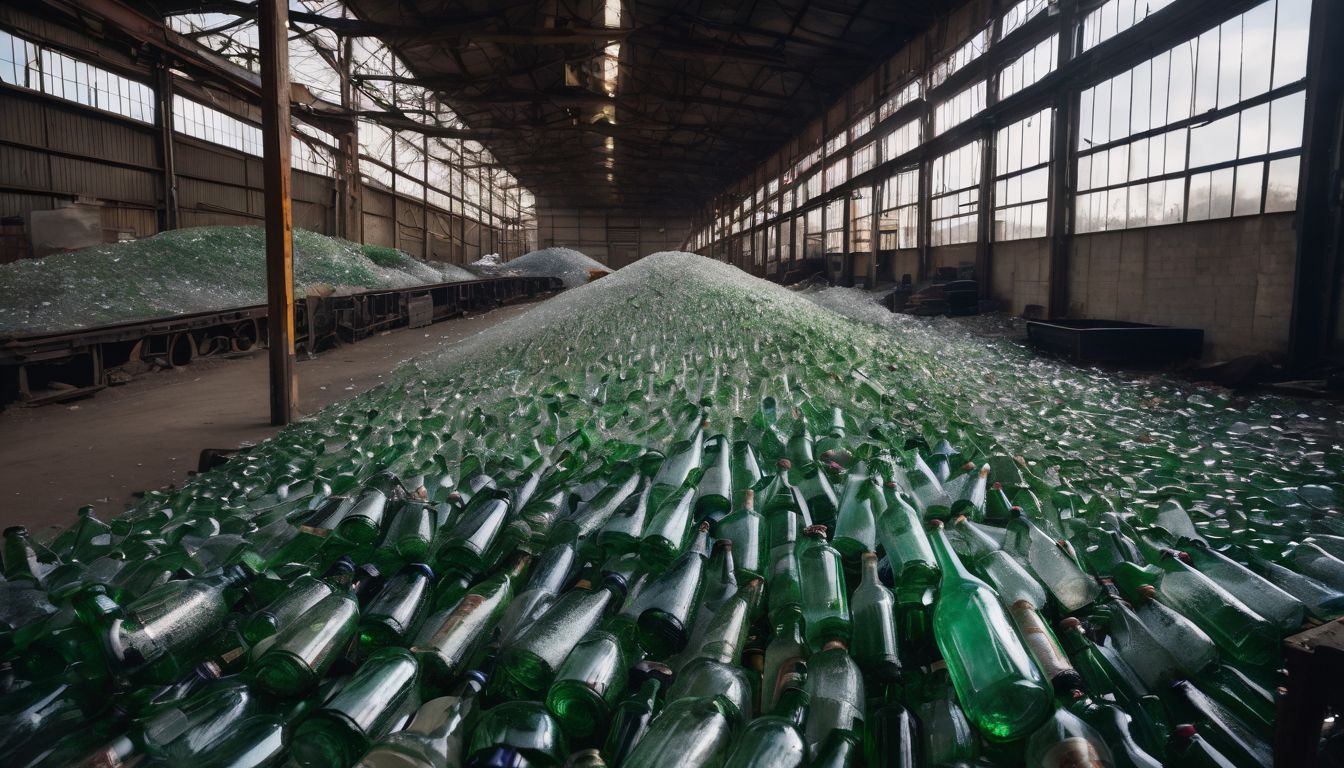We all want to do our bit for the planet, but figuring out recycling can be a real head-scratcher. Did you know that effective recycling by consumers can drastically reduce the amount of waste ending up in landfills? This blog will guide you through simple yet impactful ways you as a consumer can strengthen the recycling chain and make a difference.
Let’s get started on this green journey together!
Key Takeaways
- Consumers influence recycling success by making informed choices, such as selecting long-lasting products and participating in local waste management programmes.
- Awareness and education on recycling improve consumer engagement, leading to better product life cycles and reduced reliance on single-use plastics.
- Collaboration between consumers, manufacturers, and policymakers is essential for driving innovation in product design that supports a circular economy.
The Shift Towards Circular Economy
The shift towards a circular economy is a move away from the traditional linear model of production and consumption, where products are made, used, and then disposed of. In contrast, a circular economy aims to keep materials in use for as long as possible through recycling and reusing, creating a more sustainable approach to resource management.
Linear Economy vs Circular Economy
In discussing the evolution of economic models, we compare the traditional linear economy with the emergent circular economy to understand how they impact recycling and consumer role.
| Linear Economy | Circular Economy |
|---|---|
| Operates on a ‘take-make-dispose’ model. | Relies on the ‘reduce-reuse-recycle’ approach. |
| Emphasises short-term consumption. | Focuses on long-term resource use. |
| Generates significant waste. | Minimises waste through design and innovation. |
| Products are not designed for disassembly or recycling. | Product design integrates end-of-life considerations. |
| Limited engagement with consumers post-purchase. | Encourages consumer participation in the product life cycle. |
| Views disposal as an externality. | Considers disposal a part of the system to improve. |
| Resource extraction intensifies environmental pressures. | Efficient resource use lessens environmental impact. |
| Economic success measured by volume of sales. | Success is determined by sustainability and efficiency. |
Macroenvironmental Factors Influencing Consumer Behavior
Factors such as political, economic, sociological, technological, environmental, and legal influences can shape consumer behavior towards recycling and waste management. To learn more about how these factors impact consumer engagement in the recycling chain, keep reading.
Political, Economic, Sociological, Technological, Environmental, and Legal Factors
Political, economic, sociological, technological, environmental, and legal factors significantly influence consumer behaviour towards recycling and waste management.
- Government policies and regulations shape the infrastructure for recycling programmes and plastic waste management initiatives, incentivising consumers to participate in sustainable practices.
- Economic factors such as the cost of materials and energy influence the viability of recycling processes and the adoption of sustainable consumption habits among consumers.
- Sociological factors like societal norms and values impact consumer attitudes towards waste reduction, recycling habits, and participation in environmental conservation efforts.
- Technological advancements in waste management systems and recycling technologies provide convenience and support efficient material flows in recycling programmes.
- Environmental factors such as awareness of plastic pollution and the consequences of unsustainable consumption drive consumer engagement in recycling initiatives to reduce single-use plastic and promote waste reduction.
- Legal factors including regulations on product packaging and extended producer responsibility encourage consumer involvement in promoting sustainable consumption by holding manufacturers accountable for their products’ end-of-life disposal.
Situational Factors Affecting Consumer Engagement
Consumer engagement in recycling is influenced by various situational factors such as the perceived condition of recycling facilities, convenience of access to recycling bins and collection points, communication about recycling programs, and the availability of infrastructure for sustainable waste management.
These factors play a crucial role in determining consumer participation in the recycling chain.
Perceived Condition, Convenience, Communication, and Infrastructure
When considering the role of consumers in the recycling chain, it’s important to acknowledge how perceived condition, convenience, communication, and infrastructure play a crucial role in fostering sustainable practices. In order to promote consumer engagement in recycling, these factors must be taken into account:
- Perceived Condition: Consumers are more likely to engage in recycling efforts when they perceive the condition of their environment as being directly impacted by their actions. Highlighting the positive effects of recycling on local ecosystems can encourage participation.
- Convenience: Making recycling convenient for consumers is key to increasing participation. Accessible recycling bins, clear instructions on what can be recycled, and easy drop-off locations can significantly boost consumer involvement.
- Communication: Effective communication about the benefits of recycling and the impact of consumer actions is essential for raising awareness and encouraging sustainable behavior. Clear and consistent messaging across various platforms helps to convey the importance of recycling.
- Infrastructure: Investing in robust recycling infrastructure such as collection facilities, sorting centers, and processing plants is vital in supporting consumer efforts. Adequate infrastructure ensures that recycled materials are effectively processed and reintegrated into the supply chain.
Individual Factors Influencing Consumer Behavior
Individual factors such as beliefs, values, emotions, and intentions play a significant role in influencing consumer behavior towards recycling. Understanding these factors can help to encourage sustainable practices and promote responsible consumption.
Cognitive, Affective, and Conative Factors
Consumers’ thought process, emotions, and behavior significantly influence their engagement in recycling and waste reduction.
- Cognitive factors: These include consumers’ knowledge, beliefs, and attitudes towards recycling. It involves understanding the environmental impact of waste and the benefits of recycling. For instance, being aware of how plastic recycling reduces the demand for virgin materials.
- Affective factors: Emotions play a crucial role in consumer’s decision-making regarding recycling. Positive feelings towards environmental conservation can drive individuals to actively participate in recycling initiatives. Feeling a sense of responsibility towards reducing single-use plastic waste contributes to greater involvement in recycling.
- Conative factors: These encompass the actions or behaviors resulting from cognitive and affective processes. Consumer participation in sustainable practices such as separating recyclables from regular waste and participating in local plastic recycling programs demonstrates these conative factors.
The Changing Role of Consumers in the Recycling Chain
Consumers are now playing a more active role in the recycling chain through increased awareness, product design and innovation, and collaboration with manufacturers and policymakers.
To learn more about how consumers are shaping the future of recycling, keep reading!
Consumer Awareness and Education
Consumers play a crucial role in the recycling chain. They can make a significant impact through their decisions and actions. Raising consumer awareness about single-use plastic reduction, waste management responsibility, and sustainable consumption is essential for promoting recycling incentives and environmental conservation.
Education on effective recycling practices empowers individuals to actively participate in waste reduction initiatives.
Consumer engagement in sustainable practices influences the success of recycling programmes, shaping product design and innovation. By understanding their accountability in environmental conservation, consumers contribute to extended product lifecycles and support collaboration with businesses for feedback on eco-friendly products.
Reducing reliance on single-use plastics becomes more achievable when consumers are knowledgeable about their role in promoting recycling efforts.
Product Design and Innovation
Product design and innovation play a pivotal role in driving consumer engagement in sustainable practices. Companies that invest in designing products with environmentally friendly materials and innovative features empower consumers to make eco-conscious choices.
Innovative packaging solutions also contribute to reducing single-use plastic, encouraging consumers to participate in recycling initiatives. By integrating sustainability into product design, manufacturers can influence consumer behaviour towards responsible waste management and conservation efforts.
Innovative product designs that prioritise recyclability and durability offer consumers the opportunity to contribute positively to the recycling process. Moreover, incorporating eco-friendly features encourages consumers’ accountability in environmental conservation, fostering a culture of sustainable consumption.
As companies continue to prioritise green design principles, they elevate the role of consumers as advocates for recycling and sustainable living.
Extended Product Lifecycles
Companies are increasingly focusing on extending the lifecycles of their products to minimise waste and environmental impact. By designing products that are durable, repairable, and upgradable, they aim to reduce the need for frequent replacements.
Consumers play a crucial role in this process by choosing products with longer lifespans and supporting companies that prioritise sustainability. Their demand for long-lasting goods encourages manufacturers to develop items that contribute to a circular economy, where resources are used efficiently through reuse and recycling.
Moreover, consumers can actively participate in prolonging product lifecycles by maintaining and repairing their belongings instead of discarding them at the first sign of damage or malfunction.
Collaboration and Feedback
Consumers play a vital role in the recycling chain through collaboration and feedback. They can actively engage with companies, local authorities, and communities to promote sustainable practices.
By providing constructive feedback on products and packaging, consumers influence design improvements for more eco-friendly options. Additionally, collaborating with local recycling initiatives empowers individuals to support waste management efforts and reduce single-use plastic consumption.
Active consumer participation fosters a culture of environmental responsibility within communities.
Encouraging collaboration among consumers, businesses, and local authorities fosters a collective effort towards effective recycling practices. Providing feedback to manufacturers about the sustainability and recyclability of their products drives positive changes in product design and production processes.
Conclusion
In conclusion, consumers play a crucial role in the recycling chain through their participation and responsible waste management. They have the power to drive sustainable consumption and influence product design towards recyclability.
By raising awareness, advocating for extended product lifecycles, and collaborating with stakeholders, consumers can significantly impact recycling initiatives and contribute to environmental conservation.
FAQs
1. What is the role of consumers in the recycling chain?
Consumers play a vital part in the recycling chain by participating responsibly in waste management and contributing to single-use plastic reduction.
2. How does consumer participation impact recycling initiatives?
Consumer impact on recycling initiatives is significant; when they sort their rubbish correctly and reduce waste, it helps make the whole process more efficient.
3. Why is consumer awareness important for environmental conservation?
Consumer awareness in recycling leads to better accountability and action, which supports environmental conservation efforts across communities.
4. Can consumers influence sustainable consumption?
Yes, through smart choices and promoting recycling, consumers can greatly influence sustainable consumption and encourage others to follow suit.





